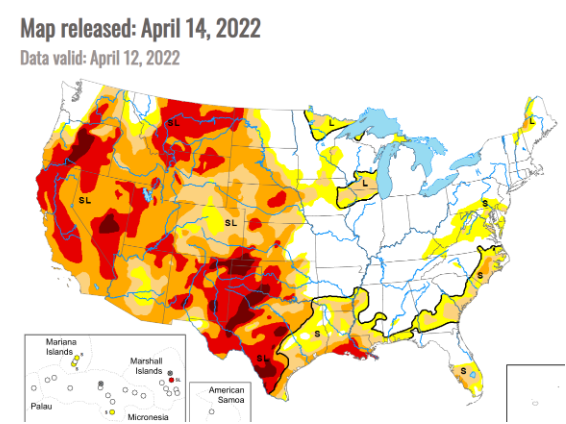Climate change can impact agriculture prices. Some studies show that the change in weather patterns, including drought, heat, freezing, and storms, can all affect agricultural prices. The price is impacted by the volatility of the returns of the costs, which can also be affected by climate change. Higher levels of volatility make it difficult for growers to plan how much of their crop they should plant. If the decision process is more difficult to determine, growers will opt for fewer crops as they become less exposed to the risks of more volatile returns. Climate change could alter the price of crops, but it may also have a spillover effect, generating more volatility and potentially less produce availability.
Can Climate Change Affect Production?
A new study by NASA shows that crop yields might decline if there are no changes to the current trajectory of climate change. According to this study, corn yields and wheat yields could decrease by 24% and 17% respectively by 2030. The yield is the volume of production that a grower can expect if they plant a particular area of agricultural products.
For example, in 2021, the United States Department of Agriculture reported that 171.4 bushels of corn were produced per acre on average. There are approximately 39.37 bushels per metric ton, and there are about 56 pounds in each bushel of corn. The USDA also estimates that wheat production yields are about 44 bushels an acre.
If corn yields are expected to decline by 24%, that could mean a shift in the volume of corn production available to consumers. A lot of the corn produced is used directly for animal feed. Approximately 95% of corn's feed grain production is for animal feed. More than 90 million acres of land in the United States is used to plant corn. If the yields decline by 24%, that will generate a considerable shortfall.
Is Drought a Function of Climate Change?
One of the issues that can impact agricultural production is drought. Drought can make it very difficult to plan corn and wheat. According to NASA, climate change can make droughts more frequent and impactful.

The U.S. Drought Monitor has spread from West to East and is becoming more of a factor. Less consistent water makes it more difficult for a farmer to plant agricultural products. Most of the agriculture produced in the United States is in the mid-west. The Drought Monitor shows that there is moderate drought in several mid-West states, which continues to shift eastward.
The change in rainfall and carbon dioxide in the atmosphere is altering the rain that is falling in certain areas. Since most of the corn and wheat grown in the United States is in the mid-west, this type of change could have significant ramifications. Additionally, a decline in the growth of corn and wheat could have far-reaching effects. The United States 2020 2020 exported nearly 70 million metric tons of corn to 73 different countries. If the United States cannot produce the volumes of corn that it generally makes due to climate change, importers will need to find another counterpart. This scenario could put upward pressure on prices.

Volatility Explodes
Additionally, climate change can put upward pressure on prices, making them more volatile. Volatility is a statistical term that describes the difference in the returns of an asset. Historical volatility is calculated by evaluating the variance or standard deviation of a time series. The standard deviation is multiplied by the square root of time and creates a percent that tells you how far the underlying price has moved if you look back a year based on the standard deviation.
The chart of the historical volatility of CME corn shows that volatility has increased substantially over the past six years, rising to nearly 35%. When prices become more volatile, it becomes more difficult for both growers and consumers to plan. Some growers base the amount of corn they will plant based on the perceived price at which they will be able to sell their corn. If prices are volatile, a grower might hold back on the volume they grow to reduce the risk of price changes.
The Bottom Line
The upshot is that climate change can alter prices, making agricultural products more difficult to find. Climate change is expected to change weather patterns, creating more frequent droughts and more significant disparities in temperature. The changing weather patterns in the United States and other agricultural producing regions could alter the precipitation landscape, which can profoundly affect yields. Studies theorize that agricultural yields will decline in the next decade and substantially reduce the volume of corn and wheat produced in the United States. This issue could generate upward pressure on prices, but it can also impact the volatility of the returns of agriculture and make planning a more arduous process.
© 2024 NatureWorldNews.com All rights reserved. Do not reproduce without permission.
* This is a contributed article and this content does not necessarily represent the views of natureworldnews.com





![Great White Sharks Observed for the First Time Changing Their Behavior in Different Marine Environments [Study]](https://1471793142.rsc.cdn77.org/data/thumbs/full/70251/280/157/50/40/great-white-sharks-observed-for-the-first-time-changing-their-behavior-in-different-marine-environments-study.jpg)
